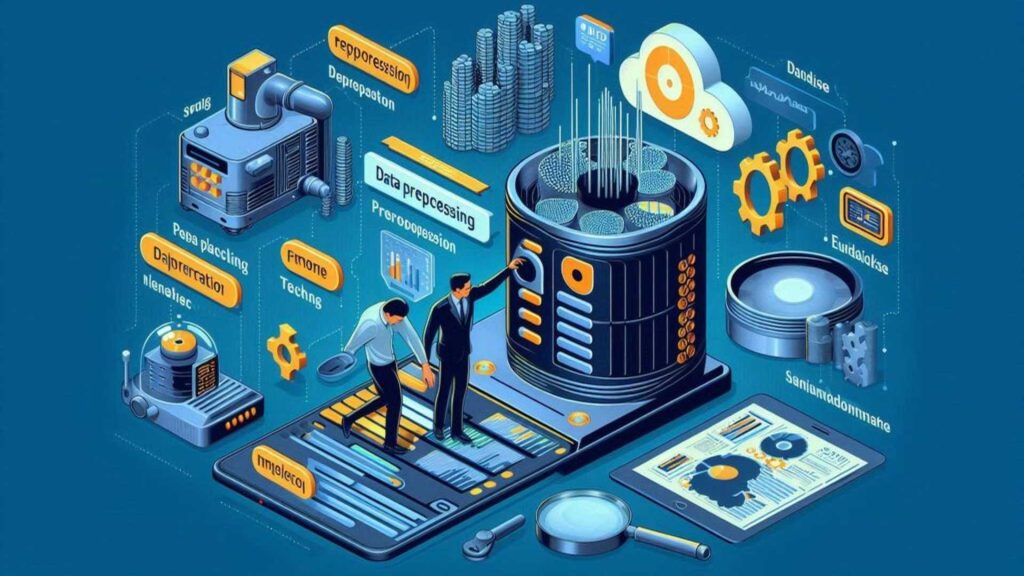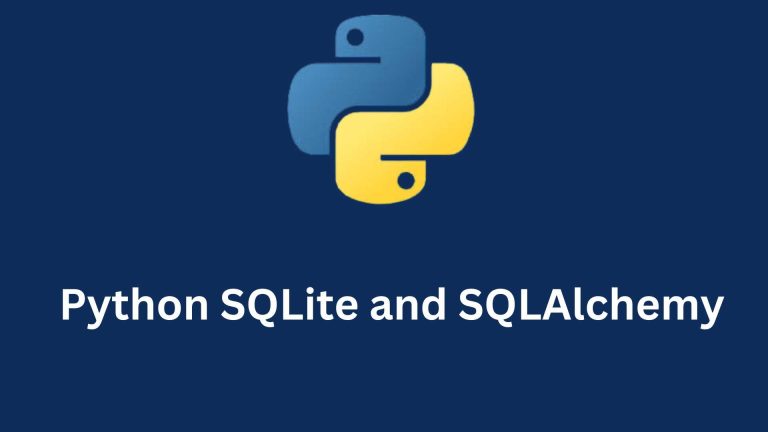Target Audience: Students and professionals in data science, machine learning, and data analytics who seek to understand the fundamental concepts and advanced techniques in data preprocessing. This includes engineering students, data analysts, data engineers, and researchers interested in improving their data preparation skills.
Value Proposition: This comprehensive guide provides a detailed overview of data preprocessing, covering essential steps and techniques, historical context, technological advancements, and practical applications. It equips readers with the knowledge to clean, integrate, transform, and reduce data effectively, thereby enhancing the quality of their analyses and models.
Key Takeaways: This guide provides a solid understanding of data preprocessing, emphasizing the importance of data cleaning, integration, transformation, and reduction. Students will gain practical skills using tools like Python, R, and SQL to address data challenges such as missing values and outliers. Real-world applications highlight the benefits of effective preprocessing in machine learning and business intelligence. Additionally, the guide explores future trends in automation, AI, and advanced techniques, preparing students for evolving data science challenges.
Data Preprocessing: Introduction, Definition, and Concept
Data preprocessing is a crucial step in the data mining and machine learning process. It involves transforming raw data into a format that is more suitable for analysis and modeling. The main goal of data preprocessing is to improve the quality and accuracy of the data, which in turn can lead to better insights and more reliable results.

The process of data preprocessing typically involves several steps, such as:
- Data Cleaning: This involves identifying and addressing any errors, inconsistencies, or missing values in the data. This may include removing duplicate records, handling outliers, and imputing missing values.
- Data Transformation: This involves converting the data into a format that is more suitable for analysis. This may include scaling or normalizing the data, encoding categorical variables, and creating new features from existing ones.
- Data Reduction: This involves reducing the dimensionality of the data, either by selecting a subset of the most relevant features or by applying dimensionality reduction techniques such as principal component analysis (PCA).
- Data Integration: This involves combining data from multiple sources into a single, unified dataset.
By performing these data preprocessing steps, you can improve the quality and accuracy of your data, which can lead to better insights and more reliable results in your data mining and machine learning projects.
Data Preprocessing: Importance for Effective Data Mining
Data preprocessing is a critical step in the data mining process, as it can have a significant impact on the quality and accuracy of the final results. Here are some of the key reasons why data preprocessing is so important:
- Improved Data Quality: By cleaning and transforming the data, you can improve its quality and accuracy, which can lead to more reliable and meaningful insights.
- Better Model Performance: Poorly preprocessed data can lead to poor model performance, as the model may struggle to identify meaningful patterns and relationships in the data. By preprocessing the data effectively, you can improve the performance of your machine-learning models.
- Faster and More Efficient Analysis: Data preprocessing can help to reduce the size and complexity of the dataset, which can make the analysis process faster and more efficient.
- Increased Interpretability: By transforming the data into a more meaningful format, data preprocessing can make it easier to interpret the results of your analysis and draw meaningful conclusions.
- Reduced Bias and Errors: Data preprocessing can help to identify and address any biases or errors in the data, which can lead to more accurate and reliable results.
Overall, data preprocessing is a critical step in the data mining process, and it is essential for ensuring the quality and accuracy of your data and the insights that you derive from it.
Historical Background
Data preprocessing has been an integral part of data analysis and mining since the early days of computing. As data collection and storage technologies have evolved, the techniques and importance of data preprocessing have also grown significantly.
Evolution of Data Preprocessing Techniques
In the early days of computing, data preprocessing was often a manual and labor-intensive process. Data was typically stored on punch cards or magnetic tapes, and cleaning and transforming the data required significant human effort. Over time, as computing power and storage capacity increased, more automated data preprocessing techniques were developed.
Some key milestones in the evolution of data preprocessing techniques include:
- 1960s-1970s: Development of basic data cleaning and transformation techniques, such as handling missing values, removing duplicates, and converting data formats.
- 1980s-1990s: Emergence of more advanced techniques like data normalization, feature engineering, and dimensionality reduction, driven by the growing complexity of data.
- 2000s-2010s: Rapid growth in the volume and variety of data, leading to the development of big data preprocessing techniques, such as distributed data processing and cloud-based data pipelines.
- 2010s-present: Increased focus on data quality, with techniques like data profiling, data validation, and data lineage becoming more prominent.
Impact of Technological Advances in Data Preprocessing
Technological advancements have had a significant impact on data preprocessing, both in terms of the techniques available and the scale at which they can be applied.
Some key technological developments that have influenced data preprocessing include:
- Increased computing power: Faster and more powerful computers have enabled the use of more complex data preprocessing algorithms, such as machine learning-based techniques for data cleaning and feature engineering.
- Big data technologies: The rise of big data technologies, such as Hadoop and Spark, has made it possible to preprocess large volumes of data in a distributed and scalable manner.
- Cloud computing: Cloud-based data processing services have made it easier to access and leverage powerful data preprocessing tools and infrastructure, without the need for significant upfront investment.
- Automation and AI: Advances in artificial intelligence and machine learning have led to the development of automated data preprocessing tools that can identify and address data quality issues with minimal human intervention.
- Sensor and IoT data: The proliferation of sensors and internet-connected devices has resulted in a massive increase in the volume and variety of data that requires preprocessing before analysis.
Overall, the evolution of data preprocessing techniques and the impact of technological advances have been crucial in enabling organizations to extract meaningful insights from increasingly complex and large-scale datasets.
Steps in Data Preprocessing
Data preprocessing involves a series of steps to transform raw data into a format suitable for analysis. The key steps include data cleaning (handling missing values, removing duplicates, and addressing outliers), data transformation (scaling, normalization, and encoding), feature engineering (creating new features from existing ones), and data reduction (selecting the most relevant features). By following these steps, you can improve the quality and accuracy of your data, leading to better insights and more reliable results in your data mining and machine learning projects.
Data Cleaning: Ensuring Quality in Data Analysis
Data cleaning is a crucial step in data preparation, ensuring the dataset’s accuracy and reliability. This process involves identifying and rectifying errors and handling missing values, duplicates, inconsistencies, and outliers. Let’s dive into each aspect with examples and practical insights.
Handling Missing Data
Missing data can skew analysis results and lead to incorrect conclusions. It’s essential to handle these appropriately. Common methods include:
- Removing Missing Values: Suitable when the amount of missing data is minimal.
- Example: In a dataset of 10,000 entries, if only 5 entries have missing values, they can be removed without significantly affecting the dataset.
- Imputing Missing Values: Replacing missing data with substituted values.
- Mean/Median Imputation: Replace missing numerical values with the mean or median of the column.
- Example: For a column with values [5, 7, NaN, 10, 15], replace NaN with the mean (9.25) or median (8.5).
- Mean/Median Imputation: Replace missing numerical values with the mean or median of the column.
- Using Algorithms: Advanced techniques like K-Nearest Neighbors (KNN) or regression models.
- Example: Using KNN, the missing value is imputed based on the nearest neighbors’ values.
Handling Duplicate Data
Duplicate data can inflate the dataset and distort the analysis. It’s essential to identify and remove duplicates.
- Example: In a customer database, the same customer might be recorded multiple times due to slight variations in their names or addresses. Using unique identifiers like customer ID can help detect duplicates.
Practical Insight: Use pandas in Python to drop duplicates:
Python code
import pandas as pd
df = pd.read_csv(‘data.CSV)
df_cleaned = df.drop_duplicates()
Handling Inconsistent Data
Inconsistent data arises from different formats, units, or typos within the dataset. Ensuring consistency is key to accurate analysis.
- Example: In a column for date entries, some dates might be in the ‘DD/MM/YYYY’ format while others are in ‘MM/DD/YYYY’.
Solution: Standardize the format using:
Python code
df[‘date’] = pd.to_datetime(df[‘date’], format=’%d/%m/%Y’)
- Practical Insight: Regular expressions (regex) can help in identifying and correcting inconsistencies in text data.

Handling Outliers and Noisy Data
Outliers are data points that differ significantly from other observations, while noisy data refers to random errors or variances in the dataset. Both can affect the results of data analysis.
- Identifying Outliers: Using statistical methods like Z-scores or IQR.
- Example: In a dataset of test scores, a score of 1000 in a range of 0-100 would be an outlier.
- Handling Outliers:
- Remove: If the outlier is due to a data entry error.
- Cap: Set a limit to the maximum and minimum values.
- Transform: Use logarithmic or square root transformations to reduce the effect of outliers.
- Handling Noisy Data:
- Smoothing Techniques: Using moving averages, binning, or clustering.
- Example: In a time series dataset, apply the moving average to smooth out short-term fluctuations.
- Smoothing Techniques: Using moving averages, binning, or clustering.
Data cleaning is a vital process in data preparation that involves handling missing, duplicate, inconsistent, and noisy data. By understanding and applying the appropriate techniques, you can ensure the quality and reliability of your dataset, leading to more accurate and insightful analysis.
Remember, clean data is the foundation of any successful data analysis project. As engineering students, mastering these techniques will equip you with the skills necessary for tackling real-world data challenges.
Data Integration: Combining and Refining Data for Insightful Analysis
Data integration is the process of combining data from different sources to provide a unified view. This is crucial in engineering, where various data sources need to be analyzed to make informed decisions. Let’s explore key aspects of data integration, including combining data sources, resolving inconsistencies, and handling redundancies, with practical insights and examples.
1. Combining Data Sources
Combining data sources involves merging data from multiple origins to create a comprehensive dataset. This can include merging databases, integrating spreadsheets, or consolidating data from different sensors and systems.
Example: Imagine a scenario where an engineering student is working on a project to monitor environmental conditions in a smart city. They might have:
- Weather data from a public API.
- Air quality data from sensors placed around the city.
- Traffic data from the city’s transport department.
Combining these sources allows the student to analyze how weather conditions affect air.
2. Resolving Data Inconsistencies
Data inconsistencies can arise when merging data from different sources. This might include mismatched formats, different units of measurement, or conflicting information.
Example: Continuing with our smart city project, suppose the air quality sensors report PM2.5 levels in micrograms per cubic meter (µg/m³), while the traffic department reports pollution levels in parts per million (ppm). To resolve this inconsistency, the student must standardize the data to a common unit.
Steps to resolve inconsistencies:
- Standardization: Convert all measurements to a single unit.
- Normalization: Scale the data to ensure uniformity.
- Conflict resolution: Develop rules to handle conflicting data (e.g., using average values or prioritizing certain data sources).
3. Handling Redundancies in Data
Redundancies occur when the same piece of information is repeated across different data sources. While some redundancy can improve data reliability, excessive redundancy can lead to inefficiencies and errors.
Example: In our smart city project, multiple sensors might record overlapping air quality data. While this redundancy helps validate readings, too many redundant entries can clutter the dataset.
Steps to handle redundancies:
- Deduplication: Identify and remove duplicate records.
- Aggregation: Combine similar data points to reduce repetition.
- Optimization: Use algorithms to streamline data storage and access.
Data integration is a vital skill for engineering students, enabling them to make well-informed decisions based on comprehensive datasets. By mastering the techniques of combining data sources, resolving inconsistencies, and handling redundancies, students can enhance their analytical capabilities and contribute effectively to their fields.
Data Transformation for Engineering Students
Data transformation is a crucial step in the data preparation process. It involves converting data from one format or structure into another, making it suitable for analysis. Let’s explore various data transformation techniques with examples and visual aids to help engineering students grasp these concepts effectively.
1. Normalization
Normalization scales the values of a dataset to a common range, typically [0, 1]. This helps to ensure that each feature contributes equally to the analysis.
Example:
Original Data:
- Height: [150, 160, 170, 180, 190]
- Weight: [50, 60, 70, 80, 90]
Normalized Data:
- Height: [0.0, 0.25, 0.5, 0.75, 1.0]
- Weight: [0.0, 0.25, 0.5, 0.75, 1.0]
Formula: X′=X−XminXmax−XminX’ = \frac{X – X_{\text{min}}}{X_{\text{max}} – X_{\text{min}}}X′=Xmax−XminX−Xmin
2. Standardization
Standardization transforms data to have a mean of 0 and a standard deviation of 1. This is useful for algorithms that assume the data follows a Gaussian distribution.
Example:
Original Data:
- Scores: [70, 80, 90, 85, 95]
Standardized Data:
- Scores: [-1.2, 0.0, 1.2, 0.6, 1.8]
Formula: X′=X−μσX’ = \frac{X – \mu}{\sigma}X′=σX−μ where μ\muμ is the mean and σ\sigmaσ is the standard deviation.
3. Encoding (Categorical and Numerical)
Categorical Encoding
Categorical data must be converted into numerical format for machine learning algorithms. Common techniques include One-Hot Encoding and Label Encoding.
Example:
Original Data:
- Color: [Red, Green, Blue]
One-Hot Encoded Data:
- Red: [1, 0, 0]
- Green: [0, 1, 0]
- Blue: [0, 0, 1]
Numerical Encoding
Some algorithms benefit from encoding numerical data, such as binning continuous values into discrete intervals.
Example:
Original Data:
- Age: [23, 45, 56, 67, 78]
Binned Data:
- Age Group: [20-30, 40-50, 50-60, 60-70, 70-80]
4. Feature Scaling
Feature scaling ensures that different features contribute equally to the result by bringing them to a similar scale.
Example:
Original Data:
- Salary: [30000, 40000, 50000, 60000]
- Experience: [1, 3, 5, 7]
Scaled Data:
- Salary: [0.0, 0.25, 0.5, 0.75, 1.0]
- Experience: [0.0, 0.25, 0.5, 0.75, 1.0]

5. Discretization
Discretization transforms continuous data into discrete bins or intervals. This can simplify the analysis and improve the performance of some algorithms.
Example:
Original Data:
- Temperature: [15.5, 20.1, 25.3, 30.0, 35.7]
Discretized Data:
- Temperature Bin: [15-20, 20-25, 25-30, 30-35, 35-40]
Understanding and applying these data transformation techniques is essential for engineering students to prepare their data effectively. By mastering normalization, standardization, encoding, feature scaling, and discretization, students can enhance the quality of their data analysis and improve the performance of their machine-learning models.
Data Reduction
Data reduction is a crucial step in data preprocessing, aimed at reducing the volume but producing the same or similar analytical results. This step is essential in handling large datasets and making the data more manageable and easier to analyze. The primary techniques for data reduction are dimensionality reduction and feature selection.
Dimensionality Reduction Techniques
Dimensionality reduction techniques are used to reduce the number of random variables under consideration. These techniques can be divided into feature extraction methods and feature selection methods.
Principal Component Analysis (PCA)
Principal Component Analysis (PCA) is a statistical procedure that uses an orthogonal transformation to convert a set of correlated variables into a set of uncorrelated variables called principal components. The first principal component has the largest possible variance, and each succeeding component has the highest variance possible under the constraint that it is orthogonal to the preceding components.
Example:
Consider a dataset with two features, height and weight. PCA can reduce this two-dimensional data to one principal component that captures the most variance, effectively simplifying the data.
Linear Discriminant Analysis (LDA)
Linear Discriminant Analysis (LDA) is a technique used to find a linear combination of features that characterizes or separates two or more classes of objects or events. The goal is to project the features in higher dimensions onto a lower-dimensional space while maximizing the separability among known categories.
Example:
Imagine a dataset with two classes, cats and dogs, based on features such as size, weight, and ear shape. LDA helps in projecting this data into a lower dimension where the separation between cats and dogs is maximized.
t-Distributed Stochastic Neighbor Embedding (t-SNE)
t-Distributed Stochastic Neighbor Embedding (t-SNE) is a non-linear technique primarily used for the visualization of high-dimensional data. It minimizes the divergence between two distributions: a distribution that measures pairwise similarities of the input objects in the high-dimensional space and a similar distribution for the low-dimensional points in the embedding.
Example:
t-SNE can be used to visualize a high-dimensional dataset like images of handwritten digits by projecting it into a 2D space, making patterns and clusters more apparent.
Feature Selection Techniques
Feature selection techniques are used to select a subset of relevant features for model construction. These methods help improve the model performance by eliminating irrelevant or redundant data.
Filter Methods
Filter methods use statistical techniques to evaluate the importance of each feature independently of the model. Common methods include correlation coefficients, chi-square tests, and information gain.
Example:
Using a correlation coefficient to select features that have a high correlation with the target variable and a low correlation with each other.
Wrapper Methods
Wrapper methods evaluate the feature subset by training and testing a model. These methods include techniques like forward selection, backward elimination, and recursive feature elimination.
Example:
Using forward selection to start with no features and iteratively add the feature that improves the model the most until no further improvement is possible.
Embedded Methods
Embedded methods perform feature selection during the model training process. These methods are often specific to a given learning algorithm, such as Lasso (L1 regularization) in linear regression, which penalizes the absolute size of coefficients and can shrink some coefficients to zero.
Example:
Using Lasso regression to automatically select features during the model training by applying a penalty to the model’s complexity.
Understanding and applying these data reduction and feature selection techniques can significantly improve the efficiency and performance of machine learning models. By reducing the dimensionality of data and selecting relevant features, we can build more interpretable and robust models, making the data analysis process more manageable and insightful for students.
Tools and Technologies for Data Preprocessing
Data preprocessing is a critical step in the data science pipeline, ensuring that the data is clean, consistent, and ready for analysis. Here, we’ll explore some essential tools and technologies for data preprocessing, providing practical insights and examples to help students grasp these concepts effectively.
1. Python Libraries
NumPy: NumPy (Numerical Python) is a powerful library for numerical computations. It provides support for arrays, matrices, and a wide range of mathematical functions.
Example:
Python code
import numpy as np
# Creating a NumPy array
data = np.array([1, 2, 3, 4, 5])
# Performing basic operations
mean = np.mean(data)
std_dev = np.std(data)
print(f”Mean: {mean}, Standard Deviation: {std_dev}”)
Pandas
Pandas is a library designed for data manipulation and analysis. It provides data structures like Series and DataFrame, which are perfect for handling tabular data.
Example:
Python code
import pandas as pd
# Creating a DataFrame
data = {‘Name’: [‘Alice’, ‘Bob’, ‘Charlie’], ‘Age’: [24, 27, 22]}
df = pd.DataFrame(data)
# Data manipulation
df[‘Age’] = df[‘Age’] + 1
print(df)
Scikit-learn
Scikit-learn is a machine learning library that provides simple and efficient tools for data mining and data analysis, including preprocessing techniques.
Example:
Python code
from sklearn.preprocessing import StandardScaler
# Sample data
data = [[1, 2], [2, 3], [4, 5]]
# Standardizing the data
scaler = StandardScaler()
scaled_data = scaler.fit_transform(data)
print(scaled_data)
2. R Programming
R is a language and environment for statistical computing and graphics. It excels in data analysis and visualization.
Example:
R code
# Sample data
data <- data.frame(
Name = c(“Alice”, “Bob”, “Charlie”),
Age = c(24, 27, 22)
)
# Data manipulation
data$Age <- data$Age + 1
print(data)

3. SQL for Data Manipulation
SQL (Structured Query Language) is essential for managing and manipulating relational databases. It allows for efficient querying, updating, and managing of data.
Example:
SQL code
— Creating a table
CREATE TABLE People (
Name VARCHAR(50),
Age INT
);
— Inserting data
INSERT INTO People (Name, Age) VALUES (‘Alice’, 24), (‘Bob’, 27), (‘Charlie’, 22);
— Updating data
UPDATE People SET Age = Age + 1;
— Selecting data
SELECT * FROM People;
Understanding these tools and technologies is crucial for efficient data preprocessing. By mastering libraries like NumPy, Pandas, and Scikit-learn in Python, R programming, and SQL, students can enhance their data manipulation skills, making them well-equipped for any data science challenge.
Challenges in Data Preprocessing for Engineering Students
Data preprocessing forms the cornerstone of every data-driven project, crucial for extracting meaningful insights from raw data. Engineering students diving into this realm encounter several key challenges that shape their journey:
1. Dealing with Large Datasets
Engineering projects often involve massive datasets, ranging from sensor readings to complex simulation outputs. Processing such large volumes of data requires efficient handling techniques to avoid performance bottlenecks and ensure timely analysis. Techniques like parallel processing, data sampling, and distributed computing frameworks (e.g., Apache Spark) are indispensable in managing these large-scale datasets.
2. Ensuring Data Quality
Data quality is paramount for reliable analysis and decision-making. Engineering datasets can be prone to various issues such as missing values, outliers, and inconsistencies. Students must master techniques like data cleaning, outlier detection, and imputation methods (e.g., mean substitution, regression-based imputation) to enhance data integrity and accuracy.
3. Handling Complex Data Structures
Engineering data often exhibits complex structures, including multi-dimensional arrays, hierarchical data (e.g., JSON, XML), and relational databases. Understanding how to navigate and integrate these diverse data types is crucial. Techniques such as data normalization, denormalization, and schema mapping are essential for harmonizing disparate data sources and ensuring compatibility across systems.
By addressing these challenges with practical insights and real-world applications, engineering students can build a solid foundation in data preprocessing, equipping them to tackle complex data problems with confidence.
Applications of Data Preprocessing
Machine Learning and Predictive Analytics
Data preprocessing plays a crucial role in machine learning and predictive analytics by improving the quality of data and enhancing the performance of models. Here are some key applications:
- Data Cleaning: Removing or correcting inaccurate data, handling missing values, and dealing with outliers are essential steps. For example, in a dataset predicting housing prices, correcting erroneous entries in the price field ensures accurate model training.
- Normalization and Scaling: Scaling numerical data to a standard range (e.g., between 0 and 1) or normalizing it to have zero mean and unit variance can improve the performance of algorithms like neural networks and SVMs. This step ensures that features contribute equally to model training.
- Feature Engineering: Creating new features from existing ones (e.g., extracting date features from timestamps) can provide more meaningful insights into models. In a time-series prediction task, extracting the day of the week or month as features can improve forecasting accuracy.
Business Intelligence
In business intelligence, data preprocessing enables organizations to derive actionable insights from raw data. Key applications include:
- Data Integration: Combining data from various sources (e.g., CRM systems, and sales databases) into a unified format facilitates comprehensive analysis. For instance, integrating customer data from different platforms helps in understanding customer behavior across touchpoints.
- Data Cleansing: Ensuring data accuracy by detecting and correcting errors (e.g., duplicate records, inconsistent formatting) ensures reliable decision-making. For example, cleansing sales data before analysis ensures accurate revenue reporting.

Data Warehousing
In data warehousing, preprocessing prepares data for storage and analysis within a data warehouse environment:
- ETL Processes: Extracting data from multiple sources, transforming it into a consistent format, and loading it into a data warehouse ensures data quality and accessibility. For instance, transforming transactional data into a star schema for efficient querying.
- Dimensional Modeling: Designing dimensional models (e.g., star schema, snowflake schema) optimizes data retrieval and analysis. For example, organizing product sales data into fact and dimension tables enables multidimensional analysis.
Data preprocessing is foundational in various domains, enhancing data quality, improving analytical outcomes, and supporting informed decision-making. Understanding these applications equips students with practical skills essential for real-world data analysis scenarios.
Case Studies in Data Preprocessing
Data preprocessing is a critical step in any machine learning or data mining project, and it often determines the success or failure of the entire endeavor. In this section, we will explore several real-world examples of successful data preprocessing techniques and the challenges faced and solutions implemented in each case.
Case Study 1: Improving Lead Quality and Insurance Agent Efficiency
Challenge: A health insurance company wanted to improve the quality of their leads and increase the efficiency of their sales agents.
Solution: The Intelliarts team created an ML-based solution that preprocesses data and then utilizes it to determine leads that are more prepared to make a purchase based on multiple factors like demographics, region, age, gender, and more. The solution contributed to a 5% increase in lead quality and a 3% increase in agent efficiency.
Case Study 2: Processing and Analyzing IoT Data for OptiMEAS
Challenge: An IoT company wanted to make better use of the vast amounts of data gathered from their devices.
Solution: Intelliarts built a fully-fledged data processing pipeline that can collect, analyze, process, and visualize big data effectively. The pipeline enabled OptiMEAS to transform its data into actionable insights and make informed decisions.
Case Study 3: Building a B2B DEI-compliant Job Sourcing Platform for ProvenBase
Challenge: A job sourcing platform wanted to automate CV parsing and candidate searching and scoring.
Solution: Intelliarts created an ML solution composed of several trained models, including an AI-based job description analyzer that can derive key information for sourced candidates to be used for scoring. The solution enabled automated candidate profile sourcing and matching, with an accuracy of over 90%.
Challenges and Solutions in Data Preprocessing
- Missing Data: One common challenge is dealing with missing data. Solutions include imputation techniques like mean/median imputation, k-nearest neighbors, or more advanced methods like matrix factorization.
- Imbalanced Data: When one class is significantly underrepresented compared to others, it can lead to biased models. Solutions include oversampling the minority class, undersampling the majority class, or using ensemble methods like SMOTE.
- Noisy Data: Irrelevant or erroneous data can negatively impact model performance. Solutions include outlier detection and removal, feature selection, and robust learning algorithms.
- High-Dimensional Data: Large numbers of features can lead to the curse of dimensionality. Solutions include dimensionality reduction techniques like PCA, t-SNE, or UMAP, and feature selection methods like recursive feature elimination or mutual information.
- Heterogeneous Data: Data from multiple sources may have different formats and scales. Solutions include data integration, normalization, and encoding techniques.
By addressing these challenges and implementing appropriate data preprocessing techniques, organizations can significantly improve the quality of their data and the performance of their machine learning models.
Future Trends in Data Preprocessing
As data continues to grow in volume, variety, and complexity, the importance of data preprocessing is only going to increase. Here are some of the key trends and advancements we can expect to see in the future of data preprocessing:
Automation and AI in Data Preprocessing: One of the biggest trends in data preprocessing is the increasing use of automation and artificial intelligence (AI) to streamline and optimize the process.
- AI-powered tools can automate tasks like data cleaning, feature engineering, and data transformation, reducing the time and effort required for these tasks. This can lead to faster and more efficient data preprocessing, allowing organizations to focus more on the analysis and insights.
Integration with Big Data Technologies: As the volume and variety of data continue to grow, the need for scalable and efficient data preprocessing solutions becomes more critical.
- We can expect to see increased integration between data preprocessing tools and big data technologies like Hadoop, Spark, and cloud-based data processing services.
- This will enable organizations to preprocess large-scale datasets more effectively and efficiently.
Advancements in Preprocessing Techniques: Researchers and data scientists are continuously working on developing more advanced and sophisticated data preprocessing techniques.
- This includes the use of machine learning algorithms for tasks like anomaly detection, missing value imputation, and feature selection.
- We can also expect to see the emergence of new techniques that can handle the unique challenges posed by emerging data types, such as text, images, and time series data.
Conclusion
Data preprocessing is a critical step in the data mining and machine learning process, and its importance cannot be overstated. By implementing effective data preprocessing techniques, organizations can improve the quality and accuracy of their data, leading to better insights and more reliable results.
Summary of Key Points in Data Preprocessing
- Data preprocessing involves cleaning, transforming, and reducing data to prepare it for analysis.
- It is essential for improving data quality, model performance, and the interpretability of results.
- Key steps in data preprocessing include data cleaning, data transformation, feature engineering, and data reduction.
- Successful case studies demonstrate the impact of effective data preprocessing on real-world problems.
- Challenges like missing data, imbalanced data, and high-dimensional data can be addressed through appropriate preprocessing techniques.
- Future trends in data preprocessing include increased automation, integration with big data technologies, and advancements in preprocessing techniques.

Importance of Data Quality in Preprocessing
Ultimately, the quality of the data is the foundation upon which all data analysis and machine learning efforts are built. By investing in effective data preprocessing, organizations can ensure that their data is accurate, complete, and relevant, leading to more reliable and insightful results. As the volume and complexity of data continue to grow, the importance of data preprocessing will only become more critical in the years to come.
To empower IT students with essential data science fundamentals, Trizula offers a self-paced, affordable program that provides industry-ready skills aligned with their academics. This flexible approach equips aspiring professionals with the necessary knowledge in data science, AI, ML, NLP, and deep science, ensuring they become job-ready by graduation. Click here to seize this opportunity and lay the groundwork for your future professional advancement.
FAQs:
1. What are the 5 major steps of data preprocessing?
The five major steps of data preprocessing are data cleaning, integration, transformation, reduction, and discretization. These steps help prepare raw data for analysis, ensuring it is accurate, consistent, and suitable for modeling.
2. What is the data preprocessing technique in data science?
Data preprocessing techniques in data science involve preparing and transforming raw data into a format suitable for analysis. This includes handling missing values, normalizing data, encoding categorical variables, and scaling features, and ensuring that data is clean and well-structured.
3. What is a preprocessor in data science?
A preprocessor in data science is a tool or module that automates the initial steps of data cleaning and transformation. It processes raw data to remove noise, handle missing values, and convert data into a usable format, making the subsequent analysis steps more efficient.
4. What is the data preparation process in data science?
The data preparation process in data science includes data collection, cleaning, transformation, and reduction. It aims to create a structured and high-quality dataset that enhances the performance and accuracy of machine learning models.
5. What are the 5 stages of the data processing cycle?
The five stages of the data processing cycle are data collection, data input, data processing, data storage, and data output. These stages systematically handle the flow of data from acquisition to the final delivery of processed information.



